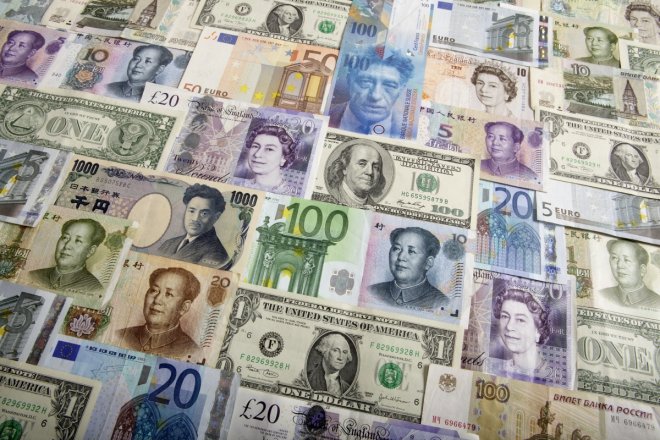
The week to Feb 10 ended with the New Zealand dollar falling the most vs the US dollar while the Australian and Canadian dollars managed to pare most of the week's losses helped by Friday's better Chinese trade data and the bounce back in oil prices respectively.
Amid mixed economic data from the US and Eurozone and in the backdrop of increasing odds of further delay in the next Fed rate hike, the US dollar was little changed on the week.
The USD index that measures the greenback's strength against a basket of currencies on a trade-weighted basis was up in the first half of the week to a fresh multi-week high of 101.01 but then pared most of the losses and ended at 100.71, just 6 pips above last Friday's close.
AUD/USD ended Friday up 0.63% at 0.7676 after China said its exports rebounded and imports rose steeply while the trade surplus widening to a 1-year high. Australia earns a major chunk of its exports from shipments to China. On the week, the Aussie dollar was down 0.1%.
The world's second largest economy said on Friday (Feb 10) that its exports rose 7.9% year-on-year in January making a sharp rebound from the 6.1% drop in December. Imports too rallied steeply as much as 16.7% from 3.1%. Analysts' expectations were for 3.3% and 10% rises respectively.
The trade surplus rose to $51.35 billion in January, its highest since 2016 January, and up from December's level of $40.71 billion while the market was expecting $47.9 billion surplus.
The Canadian dollar ended this week at 1.3086 per US dollar, 0.52% weaker from the previous week's closing of 1.3029 but still keeping not far from the 5-month high of 1.2968 hit on 31 Jan.
The West Texas Intermediary variety had fallen to as low as $51.22 during the week, down 3% from from previous Friday's close of$53.83, but ended the week 3 pips higher helped by the comments of International Energy Agency (IEA) that there will be more supply cuts by the producers to support prices. Brent gained 1.92% to $55.70 a barrel.
According to IEA estimate, global oil output dropped 1.5 million barrels per day (bpd) in January, putting supply and demand on a path to balance later in this year after a major glut of crude on the market for nearly two years.
"Some producers, notably Saudi Arabia, are appearing to cut by more than required. This first cut is certainly one of the deepest in the history of OPEC output cut initiatives," the Paris-based IEA said.
The New Zealand currency ended 1.52% weaker, making the steepest fall among majors, ahead of the euro that fell 1.39%, the Swiss franc 1.09% and the yen that closed 0.59% down.
Governor Graeme Wheeler said on Feb 9 in the monetary policy statement that New Zealand's financial conditions have firmed with long-term interest rates rising and continued upward pressure on the New Zealand dollar exchange rate.
"The exchange rate remains higher than is sustainable for balanced growth and, together with low global inflation, continues to generate negative inflation in the tradables sector. A decline in the exchange rate is needed," Wheeler said. His comments were taken as an indication by the market, increasing pressure on the kiwi dollar.
Friday's was the fifth consecutive daily slide for EUR/USD, which closed the week at a three-week low of 1.06377. USD/CHF closed at 1.00293, its highest close since 19 January. USD/JPY ended at a 11-day high of 113.353, marginally higher on the day but up 0.6% higher on the week. GBP/USD ended at 1.24865, little changed from the week to Feb 3.








